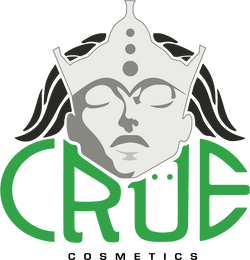
Over time, our hair changes...
Some of us may notice that our once soft and shiny hair is now dull and lifeless.
In addition, the heaters, the toques and the extreme cold temperatures of the last season have undoubtedly had an impact on the appearance of your hair.
But did you know that the porosity of your hair may also be one of the causes?
Hair porosity is one of the most important factors in overall hair health, but few people know theirs.
Today we are going to elaborate the subject at length.
By the end of the article, you will know how to identify your hair porosity and adjust your hair routine accordingly.
The good news is that despite the porosity of your hair, there are solutions to make it soft, shiny and well hydrated.
Keep reading to learn more about this important aspect of hair care!
What is hair porosity?

Hair porosity refers to how much water and protein your strands can absorb, as well as how long it takes for these elements to penetrate the hair cuticle.
This is important information, because the secret to healthy hair lies in the perfect balance between moisture and protein.
Different levels of hair porosity result in different care needs and requirements.
Knowing your hair's porosity level will help you decide what type of product to use, how much to use, and how often.
It can also help you understand why certain styling steps may or may not work for your hair type.
Types of hair porosity
Your hair porosity is high or low depending on how easily moisture is absorbed and retained in the hair.
In the case of low porosity hair , the cuticles are naturally closed, leaving little room for moisture to penetrate naturally.
Low porosity hair can also be difficult to style, as it tends to get oily quickly and doesn't last long.
Medium/normal porosity hair is balanced and retains moisture optimally, allowing it to be well hydrated without being too oily or dry.
High/high porosity hair absorbs moisture quickly, but struggles to retain it for long periods of time.
Coloring our hair, among other things, will make it very porous.
This type of hair is usually very susceptible to damage from brushing, heat styling, coloring, etc.
People who have high/high porosity hair should take extra care when styling their hair so that it stays beautiful and healthy for longer
How to test the porosity of your hair?
One of the most popular tests used to determine porosity is the glass or water bowl test.
To perform this test, simply fill a glass or bowl with water and place a lock of clean, dry hair in it.
If the strand sinks quickly and stays submerged in water, your hair is likely very porous (high/high porosity).
On the other hand, if it floats near the surface of the water or even on top of it, chances are your hair is low porosity (low porosity).
Wicks that sink slowly to the middle of the glass or bowl indicate a normal level of porosity.
Another easy way to test hair porosity is to spray sections of hair with water and observe how long it takes for them to dry.
If your locks stay damp for more than an hour, you probably have low porosity hair, while if it dries in a few minutes, your locks are probably very porous.
Normal porosity hair should take about 20 minutes to dry completely after being sprayed with water.
It is important to keep in mind that these tests cannot replace professional advice from a certified Trichologist or stylist. They will be able to provide you with personalized advice based on your individual needs and objectives.
Low porosity hair care
Understanding low porosity hair will allow you to care for it properly.
Low porosity hair has the particularity of having difficulty absorbing humidity and products.
To remedy this, low porosity hair should be washed in lukewarm water to open the cuticles and allow moisture to penetrate.
Products containing glycerin or honey will help water penetrate the strands, making them softer and easier to comb.
Look for lightweight oils like grapeseed oil or jojoba oil, which won't weigh down low porosity hair while nourishing it from within.
These oils also create a protective barrier on the surface that prevents moisture loss while keeping frizz at bay.
When styling low porosity hair, use oil- or butter-based leave-in conditioners, while avoiding heavy alcohol and protein-based products.
The Crüe Cosmetics Radiance Treatment will restore life to your damaged hair shafts without creating excess or weighing down the scalp. This is a great addition to a low porosity hair routine.
With the proper care, your low porosity hair will benefit from healthy, abundant moisture and shine!
Normal porosity hair care
If you have medium/normal porosity hair, the cuticles are lifted slightly allowing moisture to enter and leave the strand at a normal rate.
When taking care of your normal porosity hair, there are a few things to look out for in order to make sure your tresses stay healthy.
To keep your medium porosity hair healthy, it's important to use a hair treatment once a week to help lock in moisture without weighing down the hair shaft.
Also, be careful not to shampoo every day, as this can strip the strands of the natural oils needed to nourish them.
Opt for a sulfate-free shampoo and conditioner to retain maximum moisture.
Freÿa shampoo and conditioner are made with all-natural ingredients and are sulfate-free .
Hair masks and leave-in oils can also help nourish strands without weighing them down. They should be applied after shampoo and conditioner, when the cuticle is slightly open, so they can penetrate the shafts more easily.
Medium porosity hair generally needs an oil-based product that can penetrate the scalp without weighing it down or making it greasy.
Grapeseed oil , almond oil, and jojoba oil are all great options, as they provide essential nutrients while helping lock in moisture without weighing strands down or making them greasy.
High porosity hair
Taking care of high porosity hair can seem like a challenge, but with the right tips, it's possible to tame this type of hair and make it look gorgeous.
High porosity hair is characterized by overly open cuticles which makes it more prone to breakage and damage.
This type of scalp often lacks the ability to retain moisture, which can make styling difficult.
The key to caring for high porosity hair is to focus on hydration.
Use deep conditioning oils and treatments regularly, as well as sulfate-free shampoos and mild, pH-neutral products to keep your high porosity hair hydrated without damaging its delicate cuticles.
Look for oil-based products whose molecules can penetrate the scalp.
Grapeseed oil, almond oil, and jojoba oil are all great options, as they provide essential nutrients while helping lock in moisture without weighing hair down or making it greasy.
Neptüne Hydrating Oil is ideal for moisturizing and revitalizing very porous hair.
Plus, using a lightweight leave-in conditioner after washing can help protect hair from environmental damage and make it easier to style.
Conclusion
We hope this article has helped you understand what hair porosity is, how to determine your own porosity, and the proper ways to care for your hair based on its porosity. Adapt your hair routine to your porosity and your hair will thank you!






